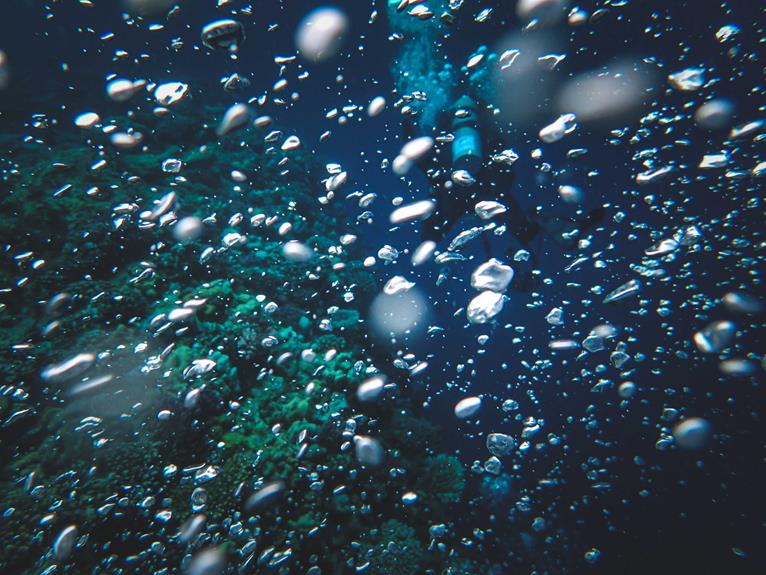As an avid scuba diver, I've always wondered how long the air in my tank will last. It's a critical question for every diver's safety and overall experience.
In this article, we'll explore the factors that affect air longevity, the risks of using old or contaminated air, and recommended practices for maintaining air quality.
We'll also discuss the importance of visual inspections and testing.
Let's dive into the fascinating world of scuba tank air longevity and ensure we have clean, breathable air for our underwater adventures.
Key Takeaways
- The longevity of air in a scuba tank is affected by factors such as the type of tank, age of the tank, storage conditions, frequency of use and maintenance, and quality of the air fill.
- Using old or contaminated air in scuba tanks can lead to risks such as oxygen depletion, carbon monoxide poisoning, corrosion and weakening of tank components, decreased breathing performance and air quality, and potential equipment malfunction.
- Recommended practices for maintaining air quality in scuba tanks include regular visual inspections and hydrostatic testing, proper cleaning and drying of tanks, use of air filters and moisture traps, storage in a cool, dry place, and refilling with clean, filtered air from reputable sources.
- Visual inspections and hydrostatic testing are important for assessing the structural integrity of the tank and detecting signs of damage or corrosion. It is crucial to follow the frequency of inspections and testing requirements, adhere to certification and standards, and avoid using tanks without proper inspections and testing.
Factors Affecting Air Longevity
Considering the longevity of air in a scuba tank, several factors come into play. Storage conditions and frequency of use are two key factors that can affect how long the air in a scuba tank lasts.
Proper storage conditions, such as temperature and humidity control, are important to maintain the quality of the air. Extreme temperatures and high humidity can negatively impact the air inside the tank, leading to decreased performance and potential contamination.
Additionally, the frequency of use also plays a role in the longevity of air. Regular use and proper maintenance can help ensure the air remains fresh and of high quality. However, a scuba tank that isn't used frequently or is improperly maintained may experience deterioration in air quality over time.
Risks of Using Old or Contaminated Air
One of the risks of using old or contaminated air in a scuba tank is the potential for oxygen depletion. When air is stored for an extended period or exposed to contaminants, the oxygen levels can decrease, leading to a dangerous situation underwater. This can result in hypoxia, a condition where the body doesn't receive enough oxygen, which can lead to dizziness, confusion, and loss of consciousness.
Another risk is carbon monoxide poisoning, which can occur if the air in the tank is contaminated with this toxic gas. Breathing in carbon monoxide can cause symptoms like headache, nausea, and even death in severe cases.
Therefore, it's crucial to ensure that the air in scuba tanks is fresh, clean, and free from contaminants to avoid these risks.
Recommended Practices for Air Quality Maintenance
To maintain the air quality in scuba tanks, it's important to follow recommended practices for regular maintenance and inspection. Here are some key practices to help maintain air quality:
- Air filter maintenance: Regularly clean and replace air filters to remove contaminants and ensure clean breathing air.
- Tank cleaning procedures: Thoroughly clean the interior of the tank to remove any residue or contaminants that may affect air quality.
- Visual inspections: Regularly inspect the tank for signs of damage, corrosion, or other issues that may impact air quality.
- Moisture traps: Use moisture traps to prevent excess moisture from entering the tank, which can lead to corrosion and affect air quality.
- Storage in a cool, dry place: Properly store tanks in a cool, dry environment to minimize the risk of moisture buildup and maintain air quality.
Importance of Visual Inspections and Testing
Regular visual inspections and testing are crucial for ensuring the integrity and safety of scuba tanks. Professional tank inspections offer several benefits. First, they allow for early detection of any damage or corrosion that could compromise the tank's structural integrity. This helps prevent accidents and ensures the tank can withstand the pressures experienced during scuba diving. Additionally, visual inspections provide an opportunity to check for any signs of wear and tear, such as scratched surfaces or loose fittings, which can be addressed before they become a problem.
Hydrostatic testing is another important aspect of tank maintenance. This process involves subjecting the tank to increased pressure to assess its ability to withstand stress. By understanding the hydrostatic testing process, scuba divers can have confidence in the reliability of their tanks. This testing is typically required every five years, although specific requirements may vary depending on local regulations and industry standards.
Best Practices for Tank Maintenance and Replacement
A key practice for maintaining scuba tanks is conducting regular inspections and testing to ensure their safety and integrity. Here are some best practices for tank maintenance and replacement:
- Regular servicing and maintenance of tank valves and regulators.
- Proper handling and transportation of tanks.
- Retirement and replacement guidelines based on age and usage.
- Recycling and disposal options for old tanks.
- Importance of staying updated on industry standards and recommendations.
When it comes to retirement guidelines, it's generally recommended to retire a tank after 15 years of use, even if it has passed all inspections and tests. This is because the materials used in the tank can degrade over time, leading to potential safety risks.
As for disposal options, it's important to check with local regulations and guidelines for proper disposal methods. Some options may include recycling the tank or taking it to a designated hazardous waste disposal facility.
Staying Updated on Industry Standards
Staying updated on industry standards is crucial for scuba divers to ensure the safety and effectiveness of their scuba tanks. The scuba diving industry is constantly evolving, with advancements in technology, safety protocols, and best practices.
It's important for divers to stay informed about industry updates to maintain the integrity of their scuba tanks and ensure a safe diving experience. By staying informed, divers can learn about new regulations, guidelines, and recommendations for tank maintenance, inspection, and replacement. They can also stay updated on advancements in tank materials and design, as well as any potential risks or concerns related to scuba tank usage.
Frequently Asked Questions
How Often Should Scuba Tanks Be Visually Inspected and Undergo Hydrostatic Testing?
I visually inspect and undergo hydrostatic testing for my scuba tank regularly. It's important for scuba tank maintenance and the overall safety of my dives. These inspections ensure the tank's integrity and prevent potential risks.
Are There Any Specific Regulations or Certifications for Visual Inspections and Hydrostatic Testing of Scuba Tanks?
Yes, there are specific regulations and certifications for visual inspections and hydrostatic testing of scuba tanks. These ensure the safety and integrity of the tanks, and compliance with industry standards.
What Are the Potential Consequences of Using Scuba Tanks Without Proper Inspections and Testing?
Using scuba tanks without proper inspections and testing can have serious consequences. Potential dangers include oxygen depletion, carbon monoxide poisoning, equipment malfunction, and decreased air quality. Safety precautions are essential to ensure a safe diving experience.
How Can Scuba Divers Ensure That the Air They Refill Their Tanks With Is Clean and Filtered?
To ensure air quality, scuba divers can use clean and filtered air by relying on reputable sources for refills. Filtration methods, like air filters and moisture traps, can also be employed for added assurance.
What Are the Retirement and Replacement Guidelines for Scuba Tanks Based on Age and Usage?
Retirement and replacement guidelines for scuba tanks depend on their age and usage. How frequently tanks are inspected, maintained, and tested can determine when it's time for retirement and replacement.

